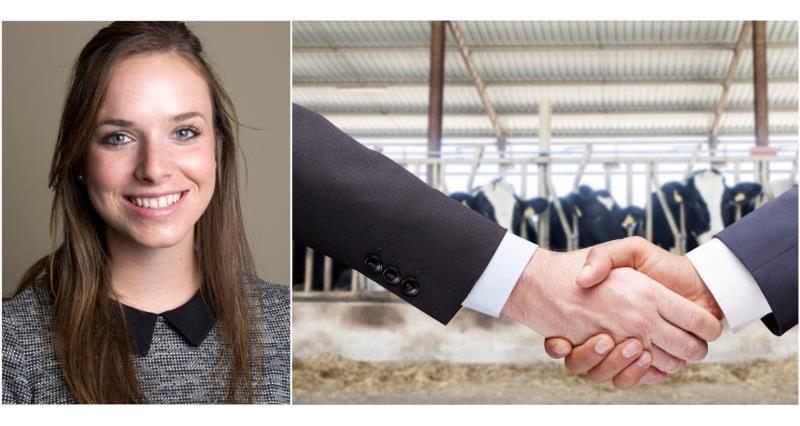She writes
Collaboration can range from a simple buying group involving only a small group of farmers, machinery sharing and retail aligned contracts through to Producer Organisations (POs). To help support the dairy sector through a volatile time, farmer collaboration and ultimately POs could provide the relationships, support and strength which the supply chain needs to prosper.
- What could we learn from the Spanish supply chain? - Food chain adviser Christine McDowell
- Fuelling the future? - North East crops board chairman and biofuels expert, Brett Askew
- Why do we need a 25-year Food and Farming Plan? - Director of Policy, Andrew Clark
- BPS Blog: Lent, Easter and April Fools - NFU Vice President Guy Smith
- Big Farmland Bird Count - a farmer's perspective - Yorkshire farmer Richard Bramley
- Blog: Fruit and veg - why don't we eat more? - Lee Abbey, horticulture adviser
In order to identify the benefits and barriers of farmer collaboration, I have collected numerous case studies and examples across all sectors, including crops, pigs, poultry, dairy and horticulture, with the aim of the dairy sector being able to learn from best practice. After analysing the different examples, the main benefits that each sector had in common were clear.
Trust and relationships“Mutual working relationships”- crops “Good relationships and communication”- dairy | Strength in numbers“A chance to influence the group’s decisions and direction”- crops “Power in numbers”- dairy “If I am speaking for a large group of growers you have a louder voice”- horticulture |
Knowledge sharing“Ideal for sharing information and knowledge” – dairy “Support and help” - pigs “The PO helps to organise things such as farm walks, which allows for communication and knowledge sharing” – dairy | Innovation and market opportunities“Added value for producer and processor”- crops “Product development and diversification” - dairy |
From the research it was possible to see where the main barriers lie. And the main issue across all sectors was farmer attitudes. Some of the quotes from this research include:
“Some people, even in this growers group just do not want as much involvement or connection as others” - crops
“Farmers don’t like to be told how to farm; there are some historic and cultural elements” - dairy
“It is human nature of the British farmer not to discuss things with others” - pigs
“Some people are very negative and dismissive towards the whole idea” - dairy
Other barriers include loss of independence, cost, red tape and farmers moving out of their comfort zone.
I believe, from the information I’ve gathered and talking to farmers who’re currently collaborating, that farmers just need to be willing to see the benefits that could be gained and to have an open mind.
There are far more benefits to be gained from working together than just milk price. Overcoming the challenges currently facing dairy farmers can surely be done when working together, as one industry. The initial engagement and willing attitudes will be the first (and biggest) barrier to overcome before this tool can be utilised.
- See also: Collaborating in dairy, a guide
